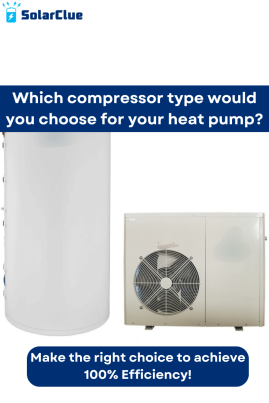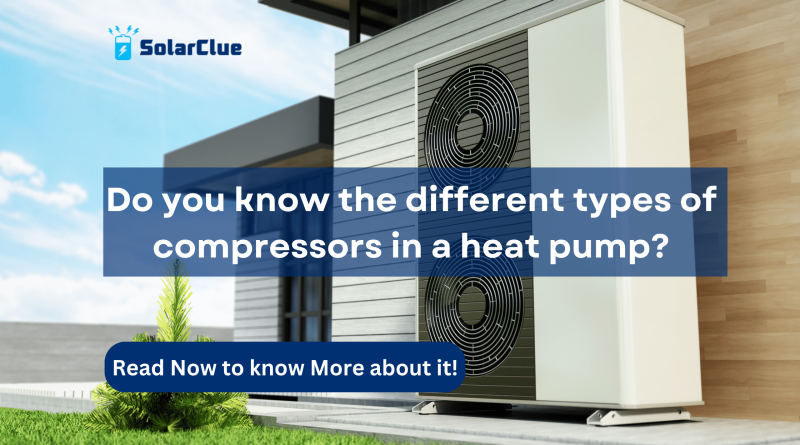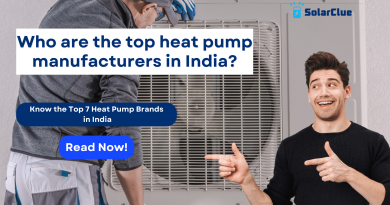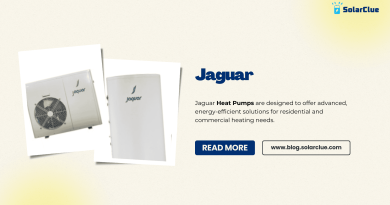What are the Different Types of Compressors in a Heat Pump?
You need to choose the right types of compressors, as it is the heart of a heat pump water heater. It will affect the performance and the efficiency of your heat pump.
But how to know which type of compressors should you prefer for your heat pump? In this blog, we will discuss in detail compressor and its types.
Table of Contents
What does a Compressor do in a heat pump?
The compressor is the engine that powers a heat pump water heater. It plays a crucial role in the refrigeration cycle, which is the backbone of the system. The compressor’s primary function is to circulate refrigerant through the system, enabling the transfer of heat from the surrounding air or ground source to the water tank.
The compressor is the heart of a heat pump water heater. It circulates the refrigerant through the system. The compressor compresses the refrigerant, increasing its temperature. This hot refrigerant then transfers heat to the water in the tank. The compressor is essential for the heat pump’s ability to extract heat from the surrounding air and transfer it to the water, making the system energy efficient.
Without the compressor, the heat pump water heater would not be able to function. The compressor is responsible for the key heat transfer process that allows the system to heat water efficiently using ambient air as the heat source. Its role is crucial in ensuring the heat pump water heater operates as intended, providing hot water while consuming less energy compared to traditional water heaters.
What are the different types of compressors in a heat pump?
There are mainly three types of compressors in a heat pump. They are:
- Single speed compressors
- Variable Speed Compressor
- Dual Compressor
Let’s discuss each types of compressors in detail, to understand their difference.
1. Single speed compressors
Single-speed compressors are the most basic and straightforward type of compressor used in heat pump water heaters. As the name suggests, they operate at a single, fixed speed, either in an on or off state. When the water temperature drops below a predetermined level, the compressor turns on and runs at its maximum speed until the desired temperature is reached.
Single-speed compressors lack the ability to modulate their output based on the actual heating demand. This can lead to inefficiencies, especially during periods of low hot water usage or milder weather conditions. The compressor may cycle on and off more frequently, resulting in higher energy consumption and increased wear and tear on the system.
2. Variable Speed Compressor
Variable-speed compressors, also known as inverter-driven compressors, are the more advanced and energy-efficient option. These compressors are equipped with sophisticated electronic controls that allow them to adjust their speed and output based on the heating demand.
During periods of high hot water usage or colder temperatures, the variable-speed compressor will ramp up its speed to provide maximum heating capacity. Conversely, when the demand is low or the weather is milder, the compressor will slow down, reducing its energy consumption while still maintaining the desired water temperature.
This modulation capability not only enhances energy efficiency but also improves comfort levels by minimizing temperature fluctuations and reducing the compressor’s cycling frequency. Additionally, variable-speed compressors tend to operate more quietly than their single-speed counterparts, particularly at lower speeds.
While more expensive than single-speed compressors, the energy savings achieved by variable-speed compressors can offset the higher initial cost over time, making them a worthwhile investment for many households.
3. Dual Compressors
Dual compressor systems take energy efficiency and performance to the next level by combining two compressors – a larger, primary compressor and a smaller, secondary compressor. This tandem approach allows the system to optimize its operation across a wide range of heating demands.
During periods of high hot water usage or extreme temperatures, both the primary and secondary compressors work together, providing maximum heating capacity. However, when the demand is lower, the system can rely solely on the smaller, secondary compressor, significantly reducing energy consumption.
The flexibility of dual compressor systems ensures that the right amount of heating power is delivered based on the specific requirements, minimizing energy waste and maintaining optimal efficiency. Additionally, the redundancy provided by having two compressors can enhance system reliability and extend the overall lifespan of the heat pump water heater.
The table below gives you a summary of all the three compressor types. This comparison chart will help you make the right decision:
Compressor Type |
Energy Efficiency |
Noise Level |
Initial Cost |
Flexibility |
| Single speed | Moderate | Higher | Low | Low |
| Variable speed | High | Lower | Moderate | High |
| Dual | Very High | Moderate | High | Very High |

Conclusion
All the three types of compressors have its pros and cons. You decision will depend on your requirements and needs. Refer to the comparison table above to make the right choice of compressor for your heat pump.
You can look for the Best Heat Pumps at affordable prices at SolarClue®. SolarClue® is an online marketplace for solar energy products like Solar Street Lights, Solar Panels, Solar Inverters and many more. You can avail discounts up to 50% on the products.




